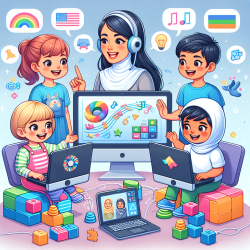Unveiling the Impact of Virtual Therapy in Special Education
In the realm of special education, providing effective support for children with communication challenges is crucial. With the advent of technology, virtual therapy has emerged as a powerful tool, offering innovative solutions to overcome geographical and staffing limitations. This blog delves into how online therapy services, like those provided by TinyEYE, are revolutionizing speech therapy for children.
Understanding the Need for Virtual Therapy
Special education advocacy groups are well aware of the challenges faced by schools in meeting the diverse needs of students requiring speech therapy. Traditional models often struggle with:
- Limited access to qualified speech-language pathologists (SLPs)
- High costs associated with in-person therapy sessions
- Geographical barriers that prevent consistent therapy
These hurdles can significantly impact the quality of care children receive. Fortunately, virtual therapy offers a viable solution, bridging the gap between need and availability.
The Data Behind Virtual Therapy Success
Research has shown that virtual therapy can be as effective as in-person sessions. A study published in the Journal of Telemedicine and Telecare highlights that children receiving online speech therapy demonstrated comparable progress to those in traditional settings. This finding is crucial for schools facing speech therapy staffing shortages, as it provides a scalable alternative without compromising quality.
Benefits of Virtual Therapy for Children
Virtual therapy offers several advantages that contribute to successful outcomes for children:
- Accessibility: Children can receive therapy from the comfort of their homes or schools, eliminating travel time and logistical challenges.
- Consistency: Regular sessions can be maintained regardless of location, ensuring continuity of care.
- Customization: Therapists can tailor sessions to meet individual needs, leveraging digital tools and resources to enhance engagement.
Empowering Schools with Virtual Therapy
For schools, integrating virtual therapy into their special education programs can lead to improved outcomes for students. By partnering with services like TinyEYE, schools can:
- Access a network of qualified SLPs, addressing staffing challenges effectively.
- Reduce costs associated with hiring full-time, on-site therapists.
- Ensure that all children, regardless of location, receive the support they need.
Conclusion: A Future-Ready Approach
As the landscape of education continues to evolve, embracing virtual therapy is a forward-thinking approach that promises to enhance the quality of special education services. By utilizing data-driven strategies and technology, schools can create an inclusive environment where every child has the opportunity to thrive.










